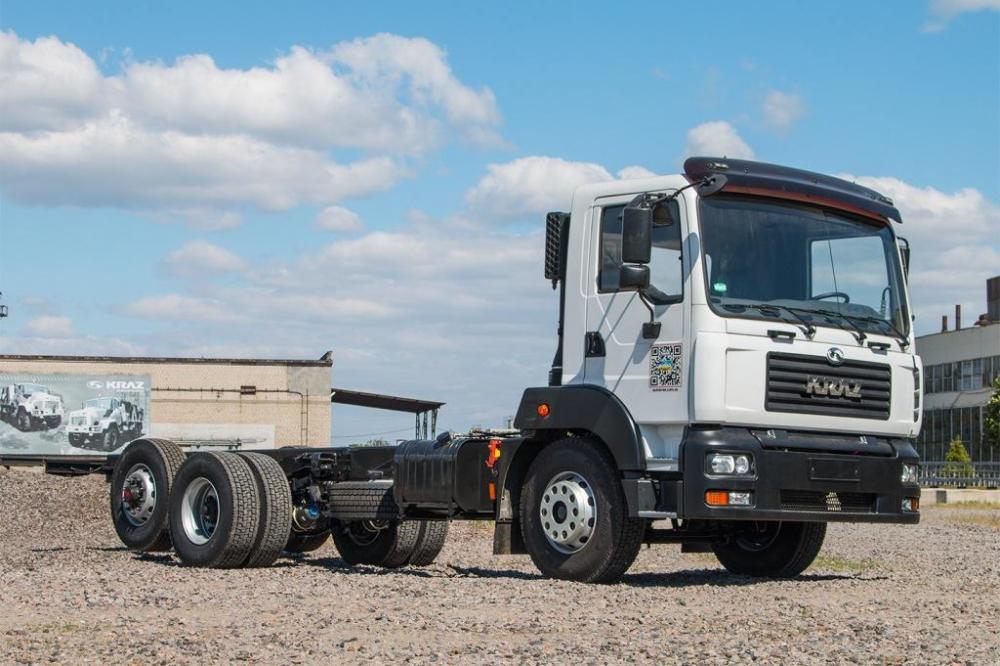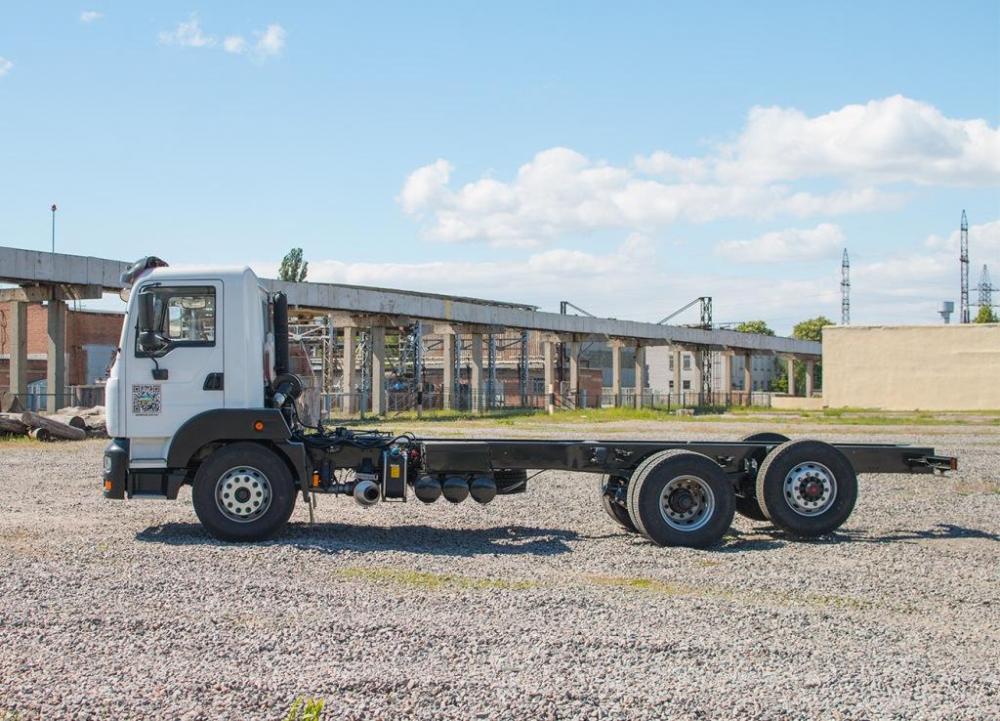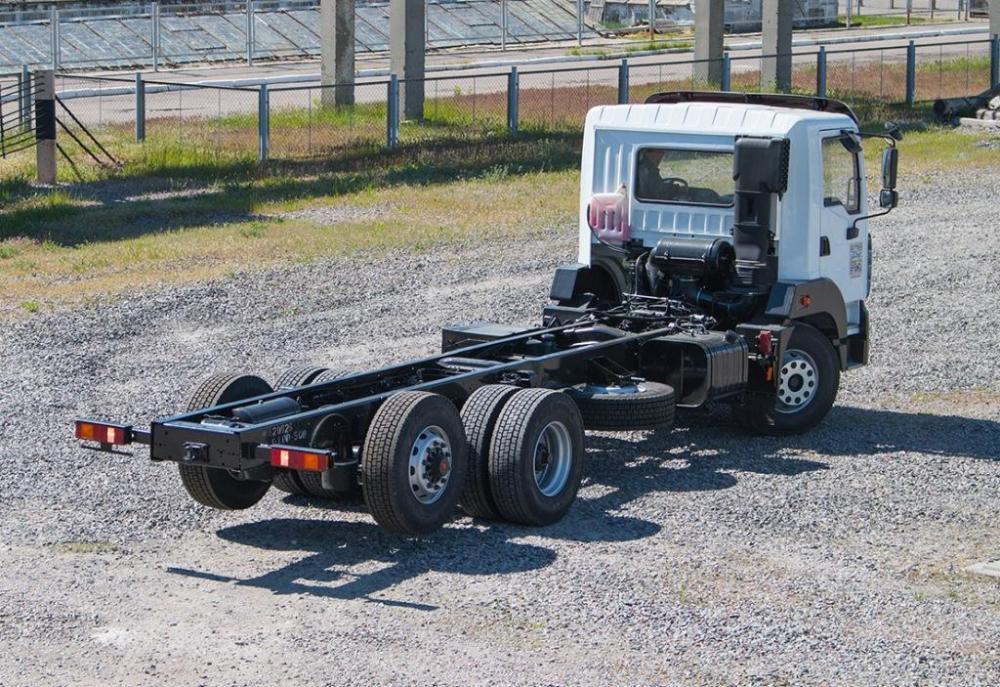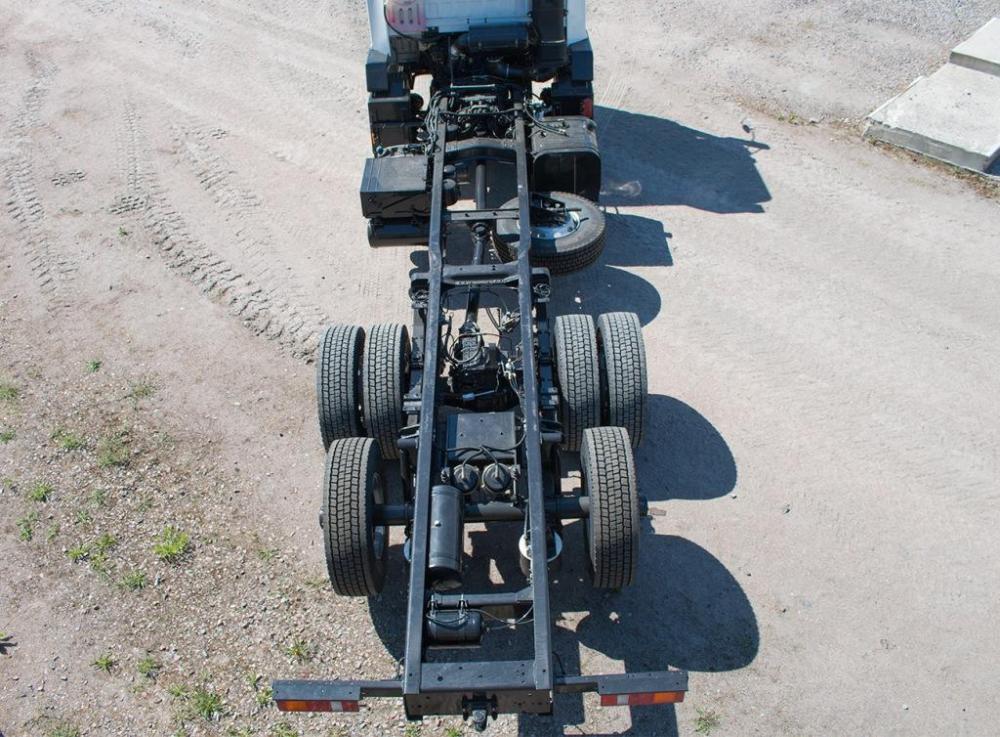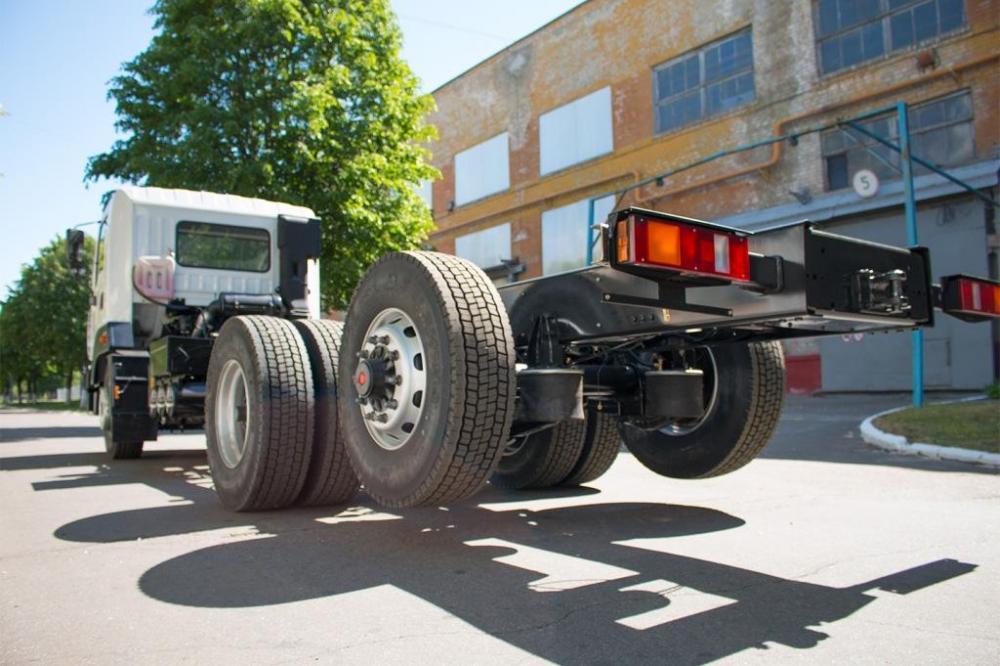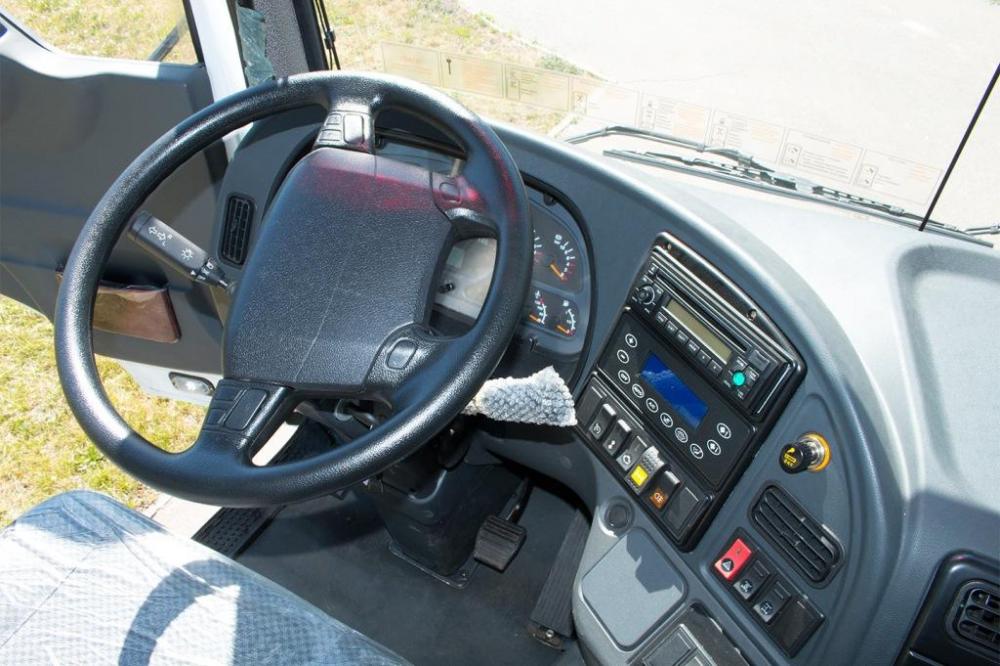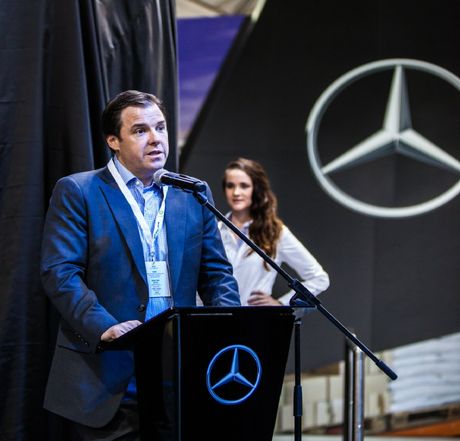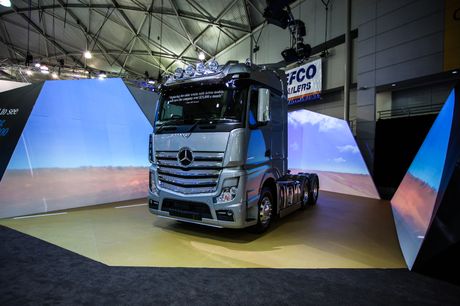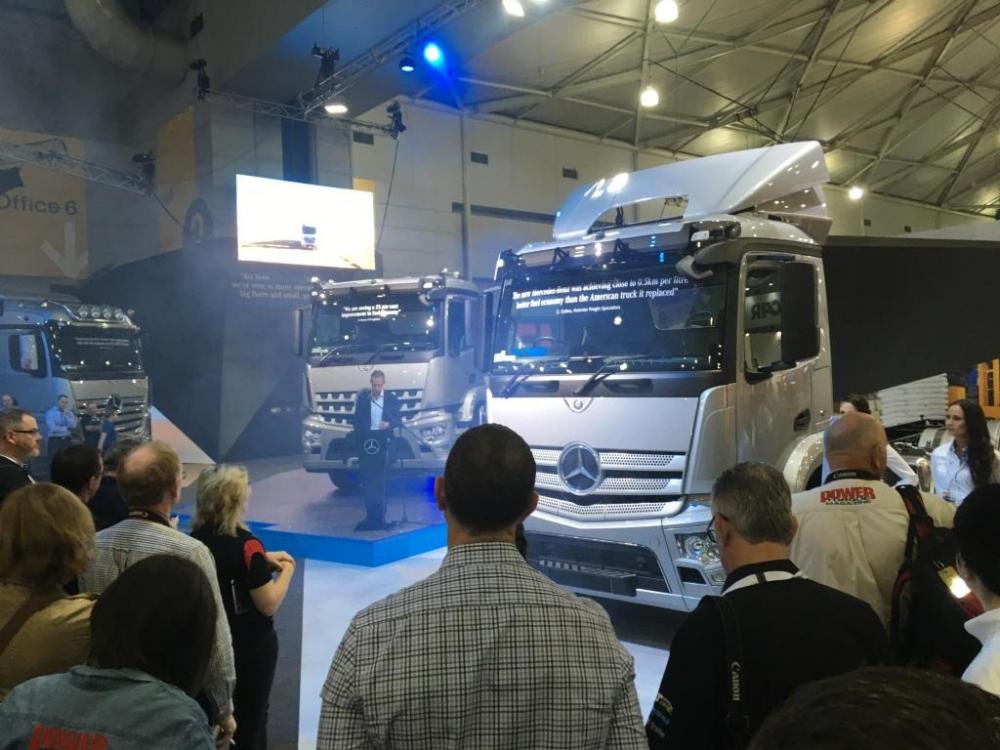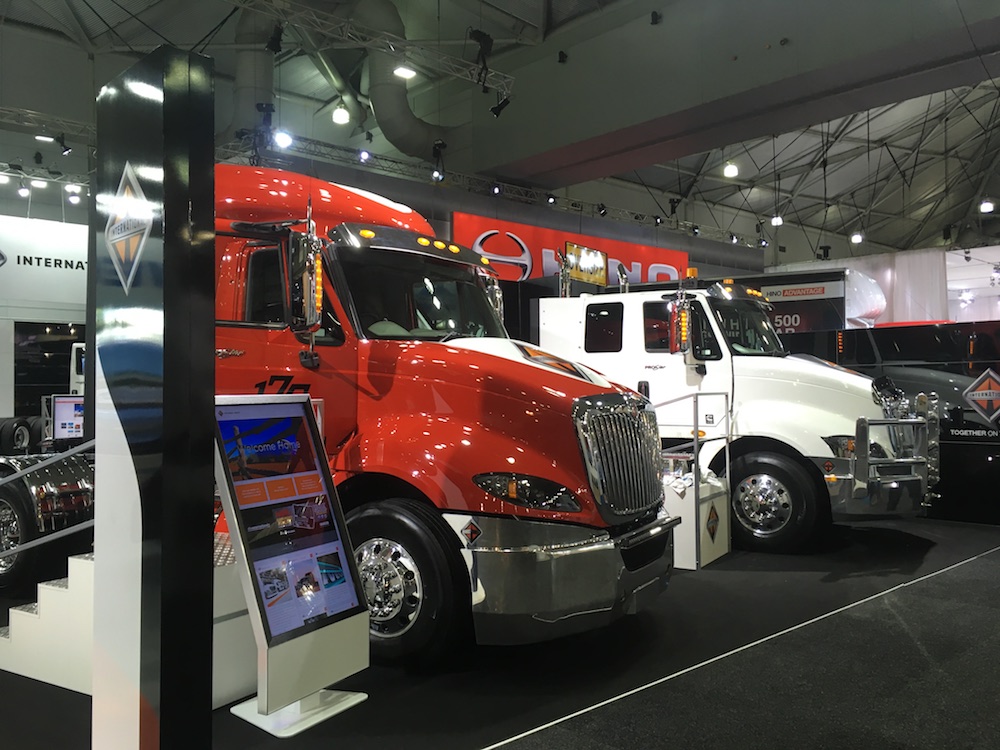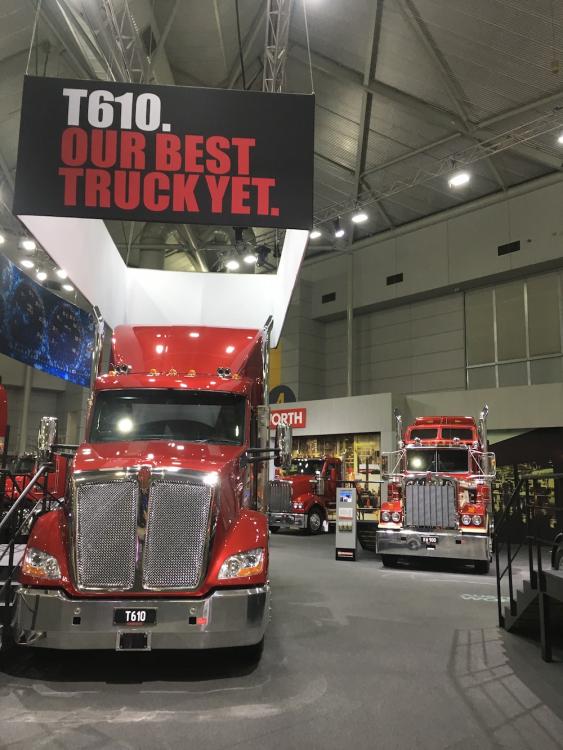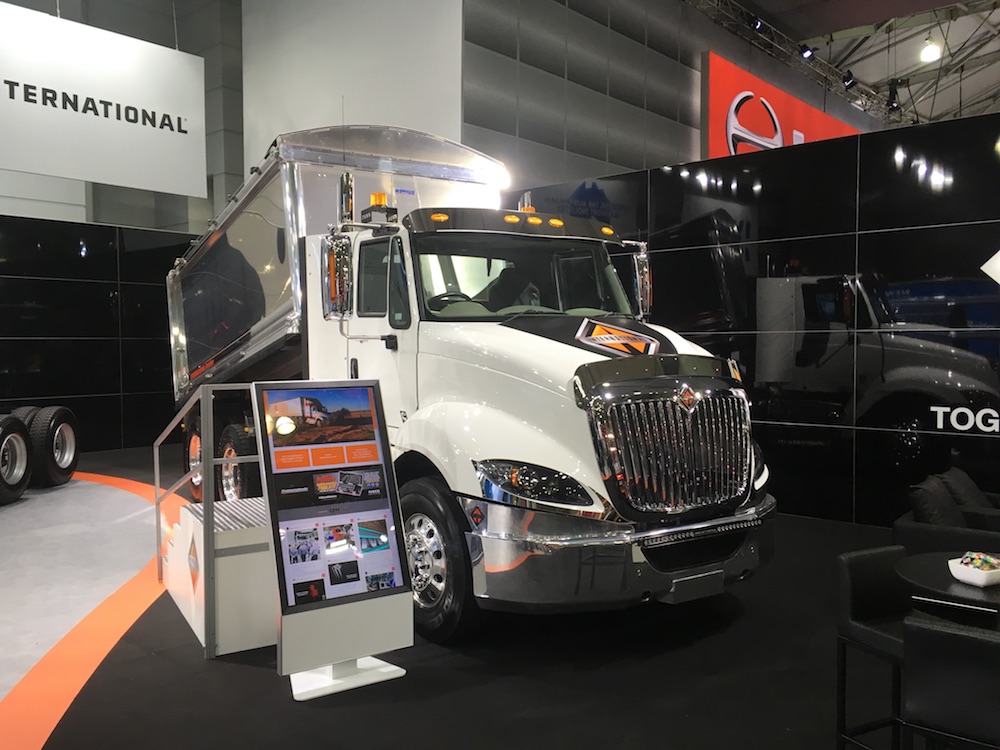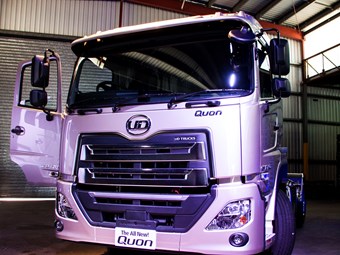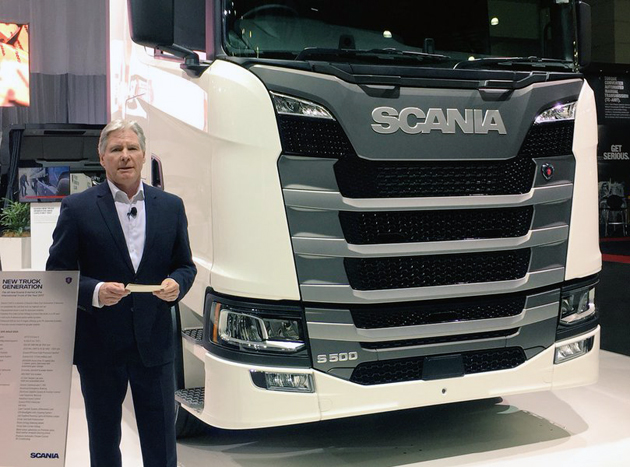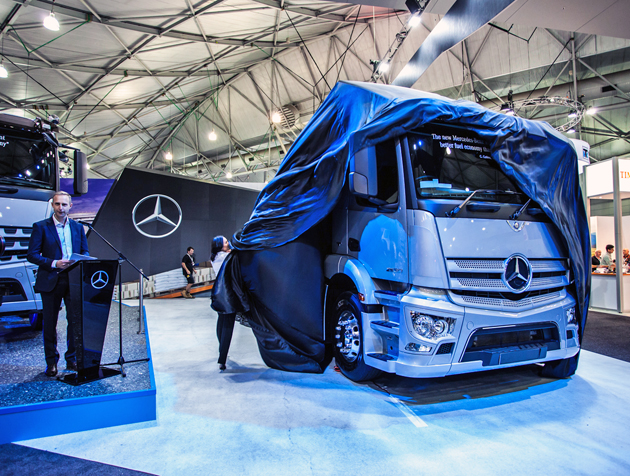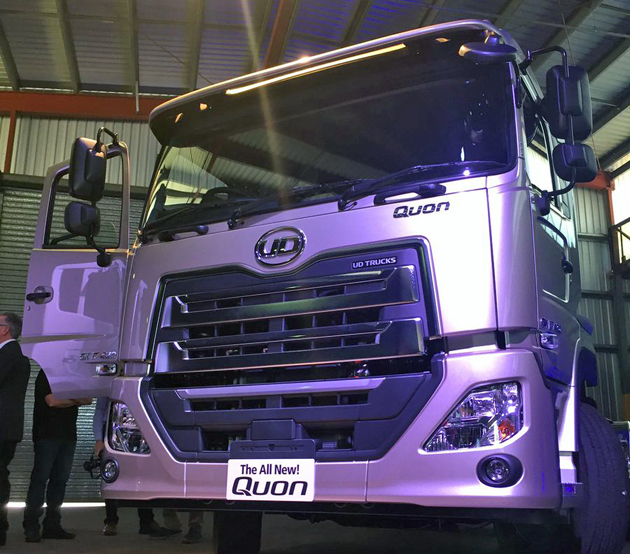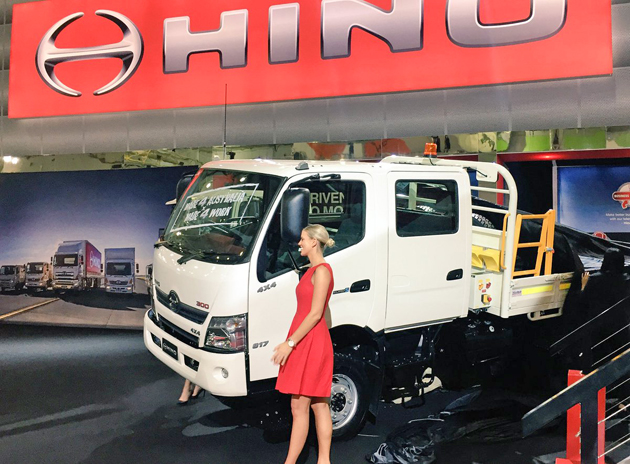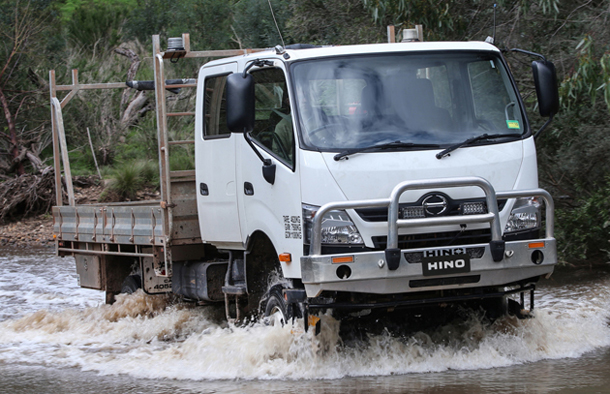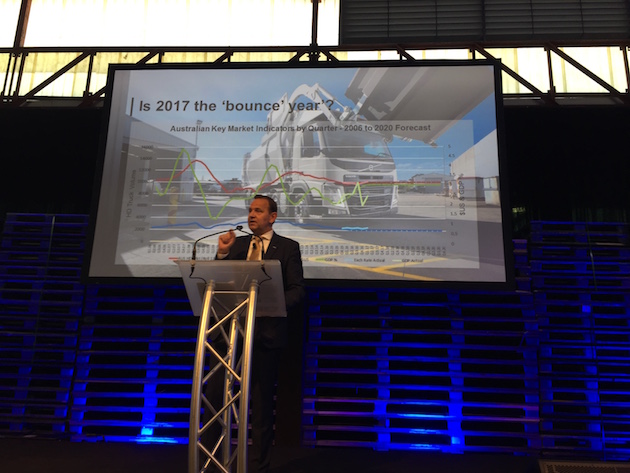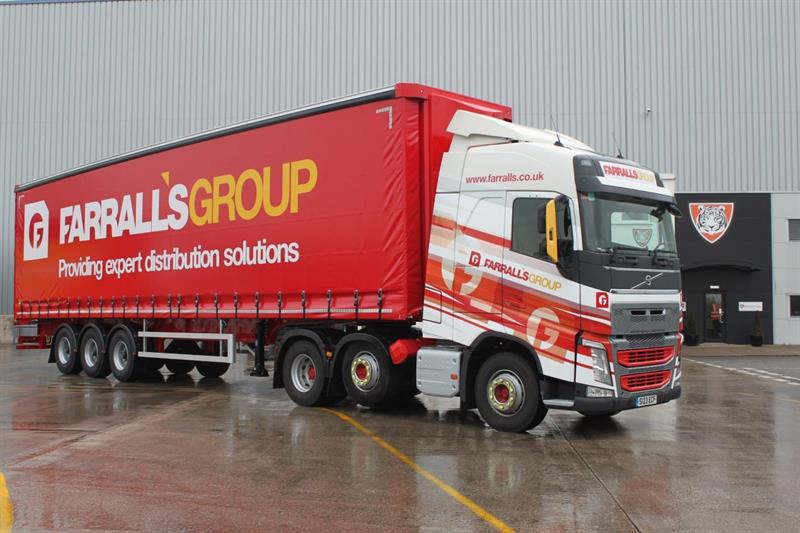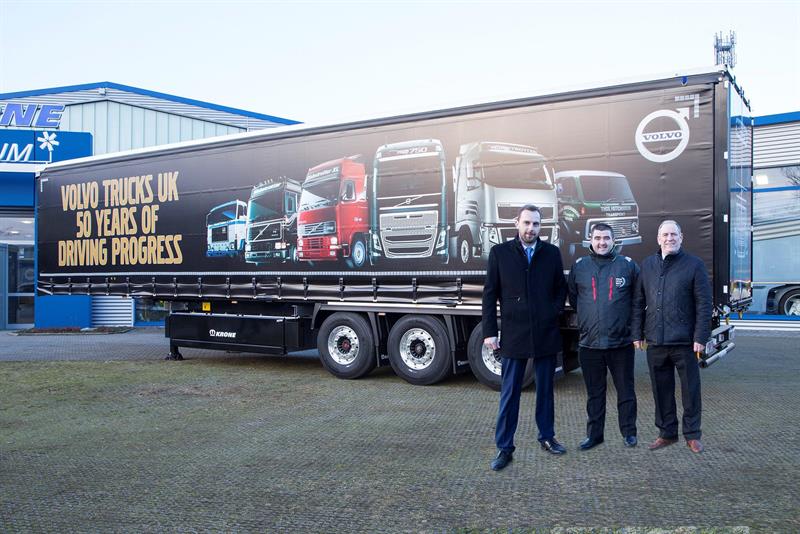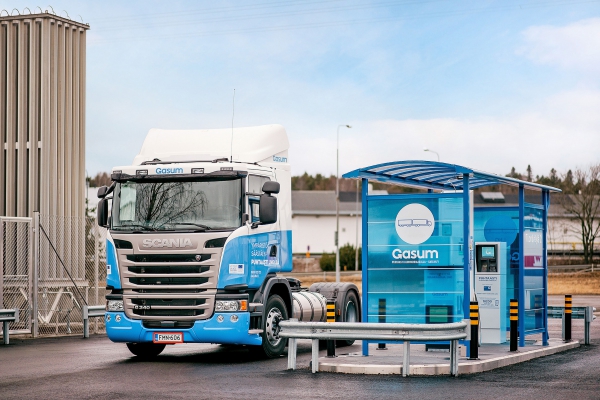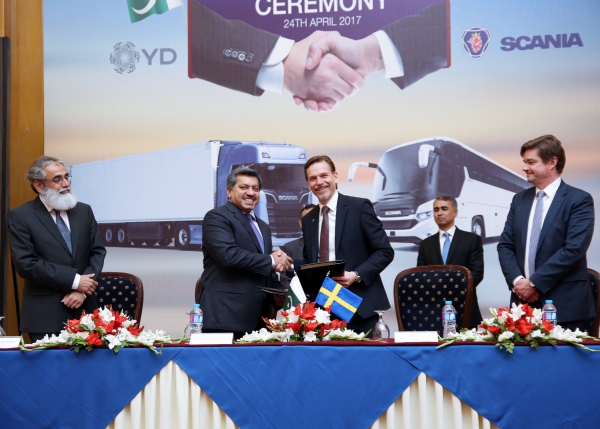
kscarbel2
Moderator-
Posts
17,893 -
Joined
-
Days Won
86
Content Type
Profiles
Forums
Gallery
Events
Blogs
BMT Wiki
Collections
Store
Everything posted by kscarbel2
-
Trump blasts German automakers' U.S. sales and threatens barriers Bloomberg / May 26, 2017 BERLIN -- German carmakers found themselves at the receiving end of renewed attacks by President Donald Trump, who reportedly chided them for selling too many vehicles in the U.S., contributing to a lopsided German trade surplus that's hurting the U.S. economy. "The Germans are bad, very bad," Trump told EU officials in a closed-door meeting, Der Spiegel reported. "Look at the millions of cars that they sell in the U.S. Terrible. We're going to stop that." Trump's top economic adviser acknowledged that the president said Germany is "very bad" when it comes to flooding the U.S. with cars, but insisted it wasn't a dig at one of the U.S.'s most-important allies. "He said, 'They're very bad on trade,' but he doesn't have a problem with Germany," Gary Cohn, director of the National Economic Council, said. "He said his dad is from Germany. He said, 'I don't have a problem with Germany, I have a problem with German trade'." Trump has repeatedly criticized Germany's high trade surplus with the U.S. In a Bild newspaper interview in January, he threatened BMW with a 35 percent import duty for foreign-built cars sold in the country. "If you go down Fifth Avenue everyone has a Mercedes-Benz in front of his house," he told Bild, while lamenting the lack of Chevrolets in Germany. General Motors has withdrawn the brand from Europe for some years. German carmakers such as Daimler, Volkswagen Group and BMW have responded to the attacks with a mix of defiance and mollification. BMW CEO Harald Krueger, one of a small group of business leaders to accompany German Chancellor Angela Merkel on her first trip to visit Trump at the White House, has defended the importance of free trade and noted that BMW's biggest plant worldwide is in Spartanburg, South Carolina -- making the manufacturer the biggest exporter on a net basis from the U.S. Representatives at Volkswagen and Daimler declined to comment on the remarks reported by Der Spiegel. A BMW spokesman wasn't immediately available. The German trade surplus rose to a record 253 billion euros ($284 billion) last year, and the U.S. trade deficit widened in January to the most since March 2012. In addition to drawing Trump's ire, the German imbalance has sparked criticism by European Union leaders including French President Emmanuel Macron. While Merkel has yet to address Trump's criticism publicly, her government was quick to respond. "Germany's position on the issue of trade balances and surpluses is well known," German government spokesman Georg Streiter told reporters in Berlin. "A surplus is neither good nor evil. It's the result of supply and demand."
-
Bosch tied to diesel-cheating claims against fourth carmaker Bloomberg / May 26, 2017 Robert Bosch GmbH, the world’s largest auto-parts supplier, was linked to emissions-cheating allegations against a fourth automaker on Thursday, raising questions about the German company’s role in the scandal gripping the car industry. Bosch and General Motors are co-defendants in a lawsuit filed Thursday by owners of diesel-powered pickups who accused the automaker of using illegal software, known as a defeat device, to pass U.S. emissions tests. Bosch “participated not just in the development of the defeat device, but in the scheme to prevent U.S. regulators from uncovering the device’s true functionality,” according to the lawsuit filed in Detroit federal court. “We believe Bosch was the enabler,” said attorney Steve Berman, a managing partner at Hagens Berman who’s represented vehicle owners in lawsuits against all four carmakers and Bosch over diesel cheating. “They provided the software in a format where manufacturers and Bosch could work together to calibrate their engines to cheat emissions tests.” The technology was so sophisticated that it could recognize when a car was being tested in a lab or smog station to feign clean emissions and compliance with pollution standards, according to U.S. regulators. “Bosch takes the allegations of manipulation of the diesel software very seriously,” the Stuttgart-based parts supplier said in an emailed statement. “Bosch is cooperating with the continuing investigations in various jurisdictions, and is defending its interests in the litigation.” It’s the fourth time in less than two years that automakers using Bosch’s diesel engine software have been accused in court by regulators or vehicle owners of cheating on emissions tests. On Tuesday, the U.S. Justice Department accused Fiat Chrysler Automobiles -- which also uses Bosch engine software -- of rigging its cars to pass emissions tests. GM spokesman Pat Morrissey said Thursday’s suit is “baseless” and its vehicles comply with environmental standards. FCA said on Tuesday that it “intends to defend itself” in the Justice Department lawsuit and denied any willful wrongdoing. Another Bosch user, Volkswagen AG, admitted in 2015 to flouting pollution rules and has committed to spending more than $24.5 billion paying fines and penalties, including buybacks, across North America. Car owners also alleged in a 2016 lawsuit that Daimler AG’s Mercedes-Benz used defeat devices. That lawsuit was thrown out but then amended and re-filed in December, adding Bosch as a defendant. Merecedes-Benz has denied any wrongdoing, but earlier this year suspended seeking certification for 2017 diesel vehicles citing the “significant increase in effort” needed to win approval from the U.S. Environmental Protection Agency. In each case, the vehicles used Bosch’s EDC-17 control unit, a computer used to regulate the diesel engine’s operation and control emissions, according to the GM lawsuit. That chip is “a good enabler for manufacturers to employ defeat devices as it enables the software to detect conditions when emissions controls can be detected,” according to the lawsuit. “Although this case is not about Volkswagen, Bosch’s history with Volkswagen provides background and support for its participation” in the racketeering “of which Bosch and GM were participants,” the GM truck owners claimed. In the VW case, vehicle owners accused Bosch of being “an active participant in a massive, decade-long conspiracy with VW,” according to court filings. Bosch didn’t admit wrongdoing but agreed to pay $327.5 million to end the class-action in February. “After diligently balancing all aspects, we decided to settle in this case,” Bosch CEO Volkmar Denner said at the time in a statement. “Bosch is in the middle of the biggest transformation of the company’s history. We want to devote all our attention and resources to that change.” Bosch faces an investigation by the U.S. Justice Department into possible criminal charges, people familiar with the matter said in September. German prosecutors are looking into whether Bosch employees helped VW rig software. Stuttgart prosecutors said Friday that they’re also investigating Bosch in relation to a probe of Daimler, which was the subject of police raids across Germany earlier this week, and a spokesman at the supplier said the company is cooperating. In the FCA lawsuit, now pending in U.S. District Court in San Francisco, Bosch and the carmaker are alleged to have installed software to manipulate the emissions control systems when the car was in testing. “Rather than finding a way to improve performance while maintaining the emissions control system,” the companies conspired to hide the actual level of pollutants, according to one of the 20 pending complaints against Fiat Chrysler, many of which also name Bosch as a defendant. FCA has proposed a software update to the EPA which attorneys say is capable of resolving the dispute “in a matter of weeks.” It would minimize or eliminate any need for payment of monetary damages to plaintiffs, the company said. Bosch has yet to issue a written reply to the claims, but supported the carmaker’s efforts to produce a fix.
-
KrAZ Trucks Press Release / May 15, 2017 The 18 metric ton-rated KrAZ-6511Н2 is a new 6х2 rigid chassis developed for 2017. The truck’s 300 horsepower Euro-5 engine is paired with a nine-speed 9JS150ТА-В range-type transmission. The new model features a liftable SAF Holland rear tag axle. The axle is raised automatically under reduced loads. The KrAZ-6511Н2 is available in a variety of axle configurations and payload capacities to meet all needs. .
-
MAZ Trucks Press Release / May 22, 2017 .
-
Mercedes-Benz wins Best Heavy Duty Truck Big Rigs / May 26, 2017 The Mercedes-Benz Actros has been voted the Best Heavy Duty Truck at the Brisbane Truck Show Awards. The new Mercedes-Benz model beat other finalists, the Kenworth T610 and T610SAR and Iveco Eurocargo Euro 6. The judging panel took into account a range of criteria including technical innovation, service/maintenance support and safety when deliberating. Daimler Truck and Bus Managing Director, Daniel Whitehead, says the Mercedes-Benz Truck and Bus team was thrilled to receive the award. "It is a great honour for the Mercedes-Benz truck to be voted the Best Heavy Duty Truck by some of Australia's most respected commercial vehicle journalists," Mr Whitehead says. He says the new generation range is proving popular with the industry. "The feedback from our customers around our new generation range has been exceptional, better than even we expected," Mr Whitehead says. Mercedes-Benz Truck and Bus Director, Michael May, says 'word of mouth' has boosted demand for the new model. "We knew this was a great truck, but the demand is even stronger than we anticipated," Mr May says. "Word of mouth is selling this truck. Operators are telling each other how good it is, what great fuel economy they are experiencing," he says. The feedback for the prime mover models has been so strong Mercedes-Benz decided to feature a number of quotes on the Brisbane show stand, with the quotes displayed on the windscreens. These include: "We expect to see a return saving of $40,000 per truck" from Transtex director, Shane Blakeborough, and "We are seeing a 25 per cent improvement in fuel economy," from CTI Logistics Commercial Manager, Glenn Brown. Mr May presented the recently-introduced Actros prime mover to the public for the first time at the Brisbane Truck Show Thursday and launched the new-generation Mercedes-Benz rigid range that is focused on distribution and vocational applications. The Brisbane Truck Show runs through until Sunday at 4pm at the Brisbane Convention and Exhibition Centre. .
-
Owner/Driver / May 23, 2017 Another year, another brilliant Heritage Truck Show! The best part about historic truck shows? You won’t meet a more passionate bunch… The 2017 Heritage Truck Show played host yet again to an impressive array of vintage trucks and memorabilia, giving the public a glimpse into bygone trucking days. Despite the torrential rain forecasted, on the day you couldn’t spot a cloud in the sky and this elevated the mood for all – especially people wanting to showcase their shiny bangers! One truckie stopped Owner//Driver and told us he didn’t even bother washing his truck because he assumed it'd pouring. "Mate take a photo on the other side, I thought we’d have a tonne of rain to wash the dust off!" he joked. The event saw nearly 150 trucks roll into the Rocklea Showgrounds, from B-model Macks through to a schmick looking old Oshkosh. President of the Heritage Truck Association Trevor Davies talked an enthralled audience through each trucking relic as it made a lap of the race course – you won’t meet a bloke who knows his vintage trucks better, that’s for sure. "We’re big into collecting old trucks…for the preservation and to see that this equipment is kept alive for the younger generation to see," Trevor told Owner//Driver. "It looks as though we’ve got a big line-up of trucks to get through for the day and we’ve packed the showgrounds right out." Trevor’s wife Phyllis, Secretary of the Association, kept the event running smoothly throughout and made sure everybody felt welcome. "It’s a very good turnout of vehicles considering people were a bit scared of the rain," Phyllis said on the day. "We also had a couple of new items there we didn’t have last year like the tank and the dragline. "All of our people are great; everyone gets along so well at these shows and it’s such a friendly atmosphere." The weekend was made possible by volunteers at the Heritage Truck Association Australia and the event sponsors including Brisbane Isuzu, Brown and Hurley, Cat Trucks, Daimler and Western Star. Photo gallery - https://www.ownerdriver.com.au/events-news/1705/heritage-truck-show-keeps-wheels-turning
-
The Show Kicks Off Diesel News Australia / May 25, 2017 This morning, the fiftieth Brisbane Truck Show kicked off with a series of new trucks for the industry, with a few trucks unveiled that haven’t been seen in Australia before. For Mercedes-Benz, it was the launch of the rigid trucks in its New Generation series. On display were an 8×4 and a 6×4. From UD, the new Quon which was only recently revealed in Japan made its Australian debut, with an official launch slated for later this year. This truck builds upon the reputation the Quon has established in the last few years and Australia’s truckies will also be interested to know that the 11-litre engine will be available with 460hp. Standing proud in the Scania stand in the centre of the hall was the Scania S500. This truck is an example of what Scania is now selling in the UK market but will give Australia an idea of the features available on this truck and its complete redesign ahead of its launch, which is likely to happen in 2018. It is a right-hand-drive UK-specification vehicle, 6×2/2 configuration with a pusher and rear drive axle. The Highline model provides additional headroom inside, allowing drivers up to 207cm tall to stand upright. Inside the cab, there’s a completely flat cab floor and underneath that floor is the Scania 13-litre SCR-only Euro VI, producing 500hp (373kW) at 1,900rpm, and 2,550Nm (1880 ft lb) of torque between 1,000 and 1,300rpm. The Opticruise GRS905R direct drive gearbox now includes a new layshaft brake, bringing the gear-changing interval down to around 0.4 of a second, around 45 per cent quicker than the current box. It is also fitted with the latest R 4100D Scania Retarder, plus an exhaust brake. Today’s opening was also the first public showing of the new International truck range being brought over into Australia by Iveco. The three models on display demonstrated the various versions of the ProStar that will be brought to Australia. Also on show was the Hino 300 4×4. This truck fills a gap in the Hino range with a 4×4 designed specifically for Australian conditions. Hino also exhibited its three new 500 Series Wide Cab medium-duty trucks – the GH1835, FG1628 and FM2632 models – in the public display of the 50+ variants in the range. The Japanese truck maker also announced new transmission options for its Wide Crew Cab FG model, plus a new automatic choice for GT 4×4 customers. Wide Crew Cab FG customers will now have the option of either a Hino six-speed manual transmission or an Allison 3000 series six-speed automatic transmission, which makes Hino the only Japanese manufacturer of a 15.5-ton GVM crew-cab truck to offer a factory-fitted Allison automatic transmission. The Brisbane Truck Show will be the first opportunity for Australian truckies to visit a show and get up close and personal with the Kenworth T610. Also making its first appearance was the new Tatra 8×8 off-road truck that now features a redesigned cab based off the DAF and is filled with an engine from the Paccar stable. .
-
New generation Quon pairs grunt with efficiency Owner/Driver / May 25, 2017 UD Trucks unveiled the new generation Quon for Australia and New Zealand at Volvo Group Australia’s (VGA) annual media conference yesterday, taking the truck to the public at the Brisbane Truck Show. The new Quon is the first heavy duty truck on the Australian market that meets Japan's next-level emission targets (pPNLT), putting it at the forefront of efficiency and safety. As well as being more efficient, safe and driver-focused, the new Quon is now offered in a 460HP variant, more horsepower than than we’ve seen within the range since the 13-litre engine departed. "UD Trucks has fully updated its flagship Quon heavy-duty truck for the first time since 2004," said Nobuhiko Kishi, Senior Vice President of Brand, Communication and Product, UD Trucks Global. "The new model will continue to reflect our dedication for supporting customer businesses in every aspect. "The new generation Quon focuses on five essential areas that drive smart logistics: drivability, fuel efficiency and respect for the environment, safety, productivity, and uptime." Every element of the new Quon, from the dashboard to the instrument cluster, has been completely overhauled, with the aim of offering the driver the highest levels of comfort, performance and ergonomic ease-of-use. Mark Strambi, Acting Vice President of Sales for UD Trucks Australia, says the new generation Quon will redefine how Australia perceives Japanese heavy-duty trucks in general and the Quon in particular. "The new Quon is significant step for UD Trucks, but also for Japanese heavy-duty trucks in general," Mr Strambi said, "The world-class technology available in the all-new Quon range has never been seen before on Japanese trucks in Australia. "UD Trucks is the first Japanese truck manufacturer to offer pPNLT compliant heavy-duty vehicles to the Australian and New Zealand markets. Additionally, the all-new Quon gives us access to models not previously offered in Australia which will significantly enhance our ability to offer our customers a comprehensive offering, backed up by the largest dealer network in Australia and New Zealand" .
-
Kenworth unveils Legend 900 at Brisbane Truck Show Owner/Driver / May 26, 2017 The Legend 900 combines modern technology with limited edition features and a uniquely Kenworth heritage feel, leaving fans of the brand in awe. Modelled on the legendary W-model and introduced in 1991, the T900 with its classic look and style was designed with the versatility to operate in almost any application, and tough enough to stand up to the harsh Australian conditions. "Not only does the Legend 900 symbolise the Kenworth spirit, it celebrates the long history of manufacturing in Australia and some of the legends that have been along for the ride," Director of Sales and Marketing at PACCAR Australia Brad May said. "Aside from the significance of the 900 in Australian history, the truck represents not only our heritage in this country, but also recognises the people behind the trucks, the owners, drivers, dealers and suppliers, and many others who have helped make Australian-made Kenworths an integral part of Australia’s road transport landscape." Allan "Steady" Stead, one of Kenworth’s longest-serving employees who dedicated his working life to improving the range of trucks has had the first Legend 900 named "Steady" in his honour. Video - https://www.ownerdriver.com.au/product-news/1705/video-kenworth-unveils-legend-900-at-brisbane-truck-show
-
Brisbane Truck Show 2017 Owner//Driver / May 26, 2017 Owner//Driver techncial editor Steve Brooks takes a tour around the truck stands at this year's Brisbane Truck Show. With all the latest models and a few sensational surprises, the 2017 show is shaping as being the most successful in the event's 50 year history. Video - https://www.ownerdriver.com.au/events-news/1705/brisbane-truck-show-2017
-
Scania introduces new S-series truck Prime Mover Magazine / May 26, 2017 Scania Australia has given visitors at this year’s Brisbane Truck Show an up close look of its new generation S-series range. Introduced on day one of the Show by Scania Australia CEO, Roger McCarthy (pictured), the S-500 on display is a right-hand drive UK-specification vehicle, shown in 6x2/2 configuration with a pusher axle (with single wheels) and rear drive axle with dual wheels. According to Scania, the S 500 model provides additional headroom inside, allowing drivers up to 207cm tall to stand upright. Inside the cab includes a completely flat cab floor with the Scania 13-litre SCR-only Euro VI situated underneath. The engine is said to produce 500hp (373kW) at 1,900rpm, and 2,550Nm (1880 ft lb) of torque between 1,000 and 1,300rpm. The truck’s 500hp engine is controlled by Scania Opticruise GRS905R direct drive gearbox that includes a new layshaft brake, bringing the gear-changing interval down to around 0.4 of a second, around 45 per cent quicker than the current box. It is also fitted with the latest R 4100D Scania Retarder, plus an exhaust brake. Scania’s S-500 truck, along with models from its G and R-series range, are located at Stand 51. .
-
Mercedes-Benz stars on day one of Brisbane Truck Show Prime Mover Magazine / May 26, 2017 Mercedes-Benz has launched its new range of Actros rigid truck models at the 2017 edition of the Brisbane Truck Show. Revealed in October last year, the new generation Actros trucks will now boast new rigid versions from 4x2 through to 8x4 models. Standard engine options will also include 8-litre and 11-litre units, with up to 350hp and 460hp respectively, while 13-litre and 16-litre engines are available for individual builds. The launch of the Actros rigid range – as well as a new smart telematics system – rounded out an eventful first day for the Daimler brand, with the Actros also voted the ‘Best Heavy Duty Truck’ at the Brisbane Truck Show Awards, which took place overnight. The new Mercedes-Benz model beat out other finalists, the Kenworth T610 and T610SAR and Iveco Eurocargo Euro 6, which was judged on a range of criterias from technical innovation, service/maintenance support to safety. “It is a great honour for the Mercedes-Benz truck to be voted the Best Heavy Duty Truck by some of Australia’s most respected commercial vehicle journalists,” said Daniel Whitehead, Daimler Truck and Bus Managing Director. “The feedback from our customers around our new generation range has been exceptional, better than even we expected.” The Mercedes-Benz Actros range is currently on display at Stand 88. The Brisbane Truck Show runs through until this Sunday at the Brisbane Convention & Exhibition Centre. .
-
UD Quon premieres in Australia Prime Mover Magazine / May 26, 2017 UD Trucks has lifted the cover on its all-new UD Quon heavy-duty truck on the first day of the 2017 Brisbane Truck Show. According to UD Trucks, the Quon will be offered in prime mover and rigid configurations locally,with its 11-litre engine to be available with 460hp. UD has also confirmed that the Quon will address five key areas of improvement, including drivability, fuel efficiency, safety, productive and uptime. “The new Quon is a huge step for UD Trucks, but also for Japanese heavy-duty trucks in general. The world-class technology available in [across] the range has never been seen before on Japanese trucks in Australia,” commented Mark Strambi, Acting Vice President of Sales for UD Trucks Australia. “The new Quon gives us access to models not previously offered in Australia, which will significantly enhance our ability to offer our customers a comprehensive offering, backed up by the largest dealer network in Australia and New Zealand.” The UD Quon is currently on display at Stand 72 at the Brisbane Exhibition & Convention Centre. . .
-
Global reveal for Hino at Brisbane Truck Show Prime Mover Magazine / May 25, 2017 Hino Australia has used the opening day of the Brisbane Truck Show to celebrate the world premiere of the new 300 Series 4x4 model. While Hino dealers have had a chance to examine the new model earlier this year, today’s unveiling marks the first time that the 300 4x4 has been publicly displayed anywhere in the world. According to Hino, the new addition to the 300 Series line up has been specifically developed for the Australian market and prototypes have been undergoing extensive local testing since 2014. In designing it, Hino has reportedly drawn upon the success of the FT and GT 4x4 models in its larger 500 Series as well as competition versions that have had success in off-road events such as the gruelling Dakar Rally. “The 300 Series 4x4 test vehicles have operated flawlessly across various types of terrain from the deserts of Australia’s interior to the rainforests of far northern Queensland’s Cape York,” said Daniel Petrovsky, Hino Australia’s Manager for Product Strategy. “It’s a model customers and dealers have been asking us for and it is particularly significant as it will allow Hino to enter into new segments of the market that we have not had access to before.” As with the rest of the Hino 300 Series that was launched in Australia back in 2014, the 4x4 will feature Vehicle Stability Control and a reversing camera as standard. Petrovsky said the mining, utilities and fire-fighting categories will be a natural fit for the lighter version of Hino’s 4x4, as will the rapidly expanding recreational vehicle market. Designated the 817 4x4, the new model is set to become available from Hino dealers later this year, the company announced. Final specifications will be announced closer to the launch date. .
-
Volvo Group Australia launches new service offensive Prime Mover Magazine / May 25, 2017 Volvo Group Australia has set the pace for the 2017 Brisbane Truck Show with the launch of an ambitious new uptime promise for both Volvo and Mack, a new UD model and a group-wide Driver Academy. According to Peter Voorhoeve, President and CEO of Volvo Group Australia, both Volvo and Mack will be introducing a new ‘uptime guarantee’ tomorrow whereby the brands pledge to get a truck back on the road within eight hours in case of an unscheduled workshop visit – otherwise they will pay a $500 ‘fine’ to the transport business for every day the truck is out of action. “We’re so confident in our product that we promise to have you back on the road within eight hours anywhere in Australia,” he said. “It’s the next step in service for the Australian market.” Voorhoeve also launched a group-wide Driver Academy as a follow-up to Volvo Group Australia’s in-depth research into driver development and recruitment, which it conducted in early 2016. “Our research program showed that something had to be done, so we’ve developed the Driver Academy in response to it,” he explained. The Academy will see Volvo Group Australia continue supporting Heather Jones’ Pilbara Heavy Haulage Girls, launch an all-new safety standards training initiative in collaboration with Tafe NSW, and set up a driver trainer training program. As a fourth pillar, the project will also see the launch of a new campaign aiming at providing a new pathway into the industry for young and inexperienced drivers, which Jones said are the industry's best bet to tackle a looming driver shortage. “As an industry, we should focus on taking on new-to-the-industry talent rather than retraining drivers with bad habits,” she explained. By taking the training process seriously from day one, she said industry will be able to tackle a wealth of issues that go beyond the mere driving task, most notably service attitude and professionalism. Mark Stambi, Acting Vice President of UD Trucks, also used the opportunity to give industry a sneak peek at the all new Quon product, which is expected to be launched in Australia in November 2017. After lifting the UD brand’s market share from 1.6 per cent at the end of April 2016 to 3.4 per cent in the same month 2017, all based on the current product line-up, Stambi said he was confident the Quon’s first full re-design in 13 years could bring even more momentum to the up-and-coming brand. As part of the pre-Show presentation, Voorhoeve also shared a personal analysis of the Australian truck market, stating 2017 may finally see the industry bounce back, with sales reaching the 10,000-unit mark again. “Australia is a strong market, and it’s arguably in a much better state now than it’s been in a long time,” he said. “The two-speed economy is gone, we’re back in a normal economy now, and that is good for trucking. “It’s not for no reason that there’s 17 OEMs in this country, and I think 2017 has the potential to show just how strong the market really is.” .
-
Hino Trucks Press Release / May 25, 2017 Dakar Rally organizers, A.S.O, have announced an overview of the 2018 event. This upcoming race will be a commemorative milestone in the rally's history―the 40th event since its inauguration and the 10th to be held in South America. For the first time in five years since 2013, Peru will be hosting Dakar Rally 2018, A.S.O announced. The event will take contestants through three countries: Peru, Bolivia, and Argentina. Kicking off in Lima, the capital city of Peru, the race will take the teams southward in the Andes towards Bolivia, and skirt the shores of Lake Titicaca before the rest day at La Paz, the capital city of Bolivia at an elevation of 3600m. Contestants will then traverse Bolivia from north to south, eventually reaching the finish line at Cordoba, the second largest city in Argentina. The entire rally will be made up of a total of 14 stages. What stands out for this race is that it will involve two loop course stages (where the start and finish lines are set up at the same bivouac), and a marathon stage (where crews race two stages back to back with no support from assistance vehicles at the intervening bivouac). The entire course will feature the diverse terrains of these three countries, meeting teams with high altitudes and dunes, and is expected to be another extremely grueling rally. Dakar Rally 2018 overview Host countries :Peru, Bolivia, and Argentina Distance covered:TBA Schedule :Start on Jan. 6, 2018 (Lima, Peru) Rest day on Jan. 12, 2018 (La Paz, Bolivia) Finish on Jan. 20, 2018 (Cordoba, Argentina) Route Dates Stages Starts Finishes Sat. Jan. 6 Stage 1 Lima, Peru Pisco Sun. Jan. 7 Stage 2 Pisco Pisco Mon. Jan. 8 Stage 3 Pisco San Juan de Marcona Tue. Jan. 9 Stage 4 San Juan de Marcona San Juan de Marcona Wed. Jan. 10 Stage 5 San Juan de Marcona Arequipa Thur. Jan. 11 Stage 6 Arequipa La Paz, Bolivia Fri. Jan. 12 Rest day La Paz Sat. Jan. 13 Stage 7 La Paz Uyuni Sun. Jan. 14 Stage 8 Uyuni Tupiza Mon. Jan. 15 Stage 9 Tupiza Salta, Argentina Tue. Jan. 16 Stage 10 Salta Belen Wed. Jan. 17 Stage 11 Belen Chilecito Thur. Jan. 18 Stage 12 Chilecito San Juan Fri. Jan. 19 Stage 13 San Juan Cordoba Sat. Jan. 20 Stage 14 Cordoba Cordoba After touring Spain, Holland, Italy, and China, the “Dakar Rally World Tour” arrived in Tokyo on Saturday, April 22, where A.S.O representatives were present to give an overview of Dakar Rally 2018. A talk show was held at the event that featured appearances by Japanese individuals with deep ties with the Dakar Rally―father and son driver team Yoshimasa Sugawara (director of HINO TEAM SUGAWARA) and Teruhito Sugawara, as well as Shinji Kazama, who was the first Japanese to enter the Dakar Rally. Shinnosuke, son of Kazama, who entered the Dakar Rally for the first time this year also joined the talk show via a video call and exchanged comments with his father. Yoshimasa Sugawara commented on the magnetism of the Dakar Rally saying, “I go into every race committed to do better than the last one, but things have a way of not turning out the way I plan. So the appeal of this rally is that there is no end to it.” Commenting on entering this rally with his father, Teruhito Sugawara remarked, “I started out in this race as the navigator of a car that my father was driving. Although it escaped me at the time, once our team started entering two trucks in the race and I began driving one of them, I realized the great responsibility that I had and the great work that my father was doing.” .
-
-
Daimler Trucks takes on Japanese market with new FUSO truck
kscarbel2 replied to kscarbel2's topic in Trucking News
. . -
Transport Engineer / May 24, 2017 Storage and distribution business Farrall’s Group has taken delivery of 10 curtainsider trailers and three rigid bodies from Tiger Trailers, after a trial unit “performed outstandingly”. The trailers are specified with features such as a reinforced headboard, Tiger’s new front aerofoil, flush rear doors, galvanised chassis, and additional hook points to help with multiple loading configurations. The Cheshire-based operator often transports newspaper and paper rolls, so Tiger added a specially engineered ‘over chassis beam’ floor design which sits above the I-beam to guarantee a completely flat floor running the full width and length of the trailer. This ensures that no imprints are left on paper products during transport, plus improves weatherproofing. Jim Perry, managing director of Farrall’s Group, says: “We chose Tiger due to the proven service and quality we experienced from them. The trial trailer performed outstandingly since entering service, so putting in an order for a further 10 trailers and three bodies was an easy decision.” He adds: “It’s crucial that we’re able to order equipment to a specification that is going to work for us. Tiger was able to look carefully at each of our requirements and ensure they were met; delivering all of the new assets within our specified timeframe.” .
-
Transport Engineer / May 24, 2017 Trailer manufacturer Krone has provided a special Profi Liner curtainsider to Volvo Trucks for a test run from Gothenburg to Scotland. The trailer was liveried to mark the 50th anniversary of Volvo’s UK and Irish operation and was hitched to a limited edition FH16-750, one of 50 manufactured for the anniversary celebrations. The Profi Liner was loaded with concrete blocks to the maximum load of 24 tonnes for the continent and 28 tonnes for the UK. Martin Tomlinson, Volvo’s head of product demonstration, says: “Fifty of the special Ailsa FH16s have been produced and it seemed fitting to make Ailsa Craig, in north west Scotland, a destination point during the trial.” The test was successful and the trailer “ran smoothly and, as usual, without any problems”, he reports. “We specify Krone trailers for our demonstration fleet because, apart from anything else, the equipment is well-built and the service is always first class.” Pictured (L-R) are: Andreas Arns, Krone’s international sales manager; Martin Tomlinson, Volvo’s head of product demonstration; and Fran Pickering, managing director of Krone UK. .
-
Scania Group Press Release / May 25, 2017 The Finnish city of Turku, the country’s third largest, will start operating a liquified biogas (LBG) truck for its waste management. Turku participates in the EU initiative Civitas, a network of cities dedicated to cleaner and better transport in Europe. A Civitas project is presently examining the benefits of increased utilisation of biogas. In Turku, the Finnish gas provider Gasum will operate a LBG-powered Scania G 340 tractor unit on behalf of Turku to establish the advantages of using biogas in heavy transport. Five to six times daily, the truck will transport sewage sludge from a water treatment plant to the Topinoja biogas plant, a distance of 16 kilometres. The LBG-powered Scania truck will replace a diesel truck on the same route. Turku has set the target of becoming fossil-free by 2040. “We have committed ourselves to promoting low-emission transport,” says Turku Mayor Aleksi Randell. .
-
Scania Group Press Release / May 24, 2017 Pakistan, with a population of approximately 200 million, has for years been a white spot on Scania’s map. But not any longer. Recently, Scania appointed Yousuf Dewan Truck and Bus Company as its distributor to sell trucks and buses in this populous country. Japanese, Korean and Chinese manufacturers today dominate the market for heavy vehicles although several of Scania’s European competitors are also present. However, the total market is modest for a country of Pakistan’s size. “We are especially hopeful in selling high-end coaches,” says Tobias Ekstedt, who is managing the establishment in Pakistan. “We know that there are sufficiently many customers that are willing to pay to travel in comfort between the major cities.” Initially, Scania will sell complete buses with bodies from its production in Europe and Brazil. “There is certainly a potential for both local assembly and bus bodybuilding, which we might consider in the future.” A market for more efficient trucks In the truck business, the country is particularly interesting in view of the new links from central China to the Pakistani port of Gwadar that are now under construction. A new 1,100-kilometre motorway is being built between the country’s two largest cities, Karachi and Lahore, while the roads leading to and from the Chinese border are being substantially upgraded. With the new route, sea transport from China can be reduced by three weeks and shipments from the oil producing countries in the Middle East substantially shortened. “This opens a market for more efficient trucks. We will have a modern infrastructure with higher average speeds. Fuel now constitutes half of transport company expenditure and, as we know, Scania is leading in this area. Initially, we are focusing on high-value goods transport. Fuel and gas transportation is a high-volume segment where European competitors have had success lately.” Scania also hopes to deliver trucks to the Pakistani mining sector. It is perhaps less known that the country, for example, has the world’s fifth largest gold deposits. Scania’s distributor, Yousuf Dewan Truck and Bus Company, belongs to the Dewan Mushtag Group, a conglomerate with businesses in the textile, cement and sugar production industries. It also imports BMW passenger cars to Pakistan as well as assembles Korean cars. Following the establishment of a service and sales organization, Scania annually expects to sell some 100 trucks and buses. .
-
Scania Group Press Release / May 24, 2017 Underneath the hot sun and haze, a team from Scania Mining and the customer, VPR Mining Infrastructure Pvt Ltd., are working with an ongoing Scania Site Optimisation Project – a framework of tools, methods, and information to improve mining transport operations – at the coal mine Jayant in Singrauli in the Indian state of Madhya Predesh, five hours drive from Varanasi. Scania’s task in Singrauli is to increase the customer’s productivity and reduce costs by measuring and analysing the waiting time and the queue to load, as well as the loading methods and the condition of the roads. VPR Mining uses 160 Scania trucks to transport the 5-20 metres thick layer of overburden from the open pit. A large number of excavators are used to load the trucks and the annual production amounts to about 60 million tonnes. Lean principles, tools, and methods Jon Fangel from Scania Mining is the Project Manager on site. The project in Singrauli is showing promising results. VPR and Scania are working together to make sure that the implementation is embedded in the ways of working with continuous improvements. “The core of Scania Site Optimisation framework is to holistically view the mine as a factory, and implement the lean principles, tools, and methods,” says Jon Fangel. He also stresses that the most important aspects of the project are the collaboration with the customer, as they work together to find improvements, prioritise what needs to be done and implement the solution. “We see many opportunities for further improvements of the business in the future. VPR Mining and we are very pleased with our cooperation so far.” .
BigMackTrucks.com
BigMackTrucks.com is a support forum for antique, classic and modern Mack Trucks! The forum is owned and maintained by Watt's Truck Center, Inc. an independent, full service Mack dealer. The forums are not affiliated with Mack Trucks, Inc.
Our Vendors and Advertisers
Thank you for your support!



